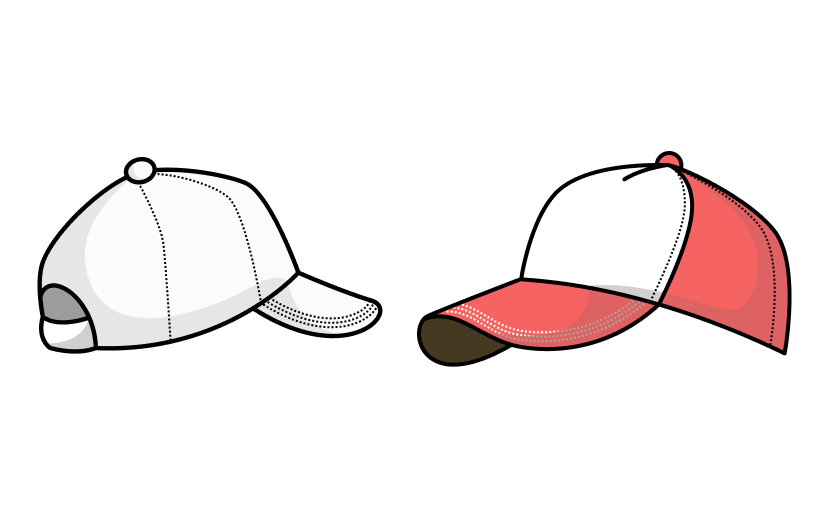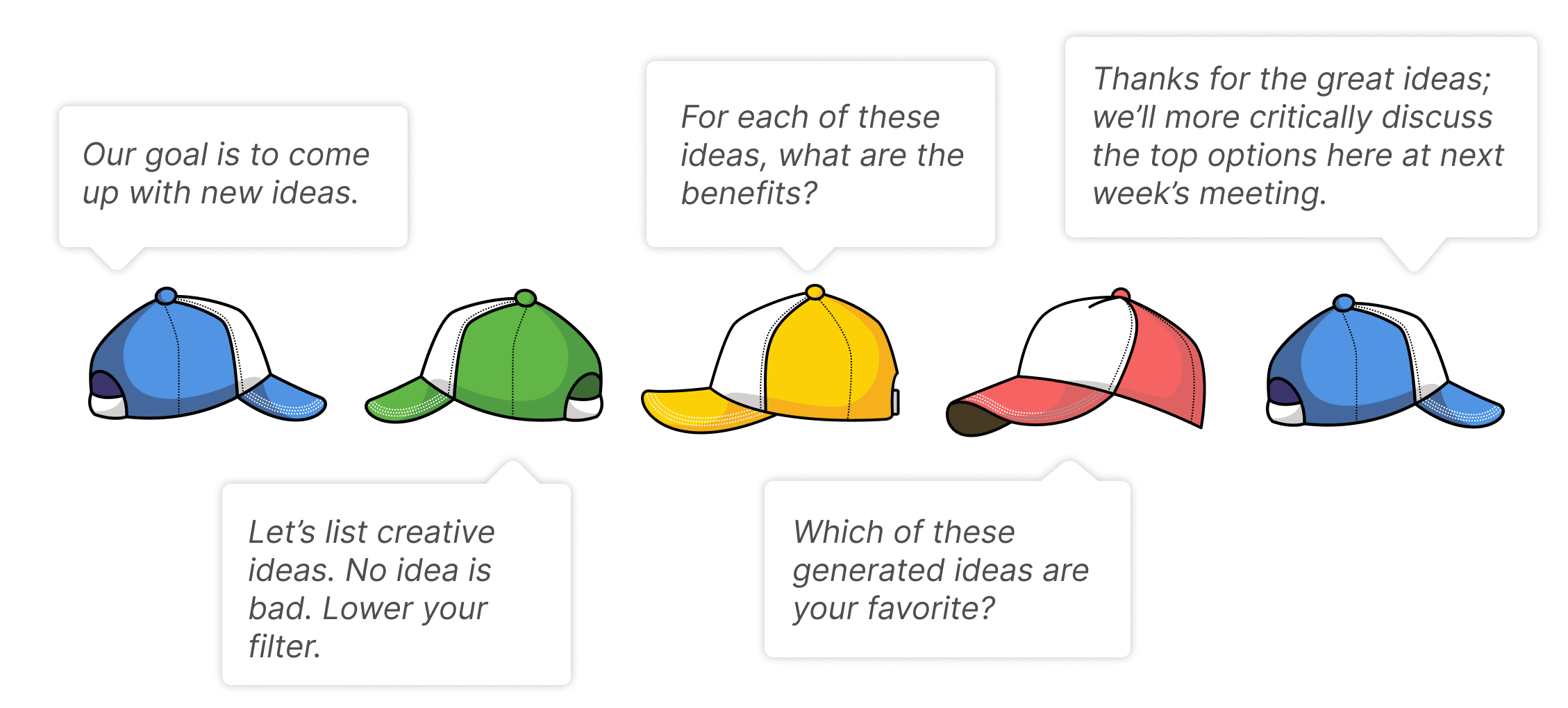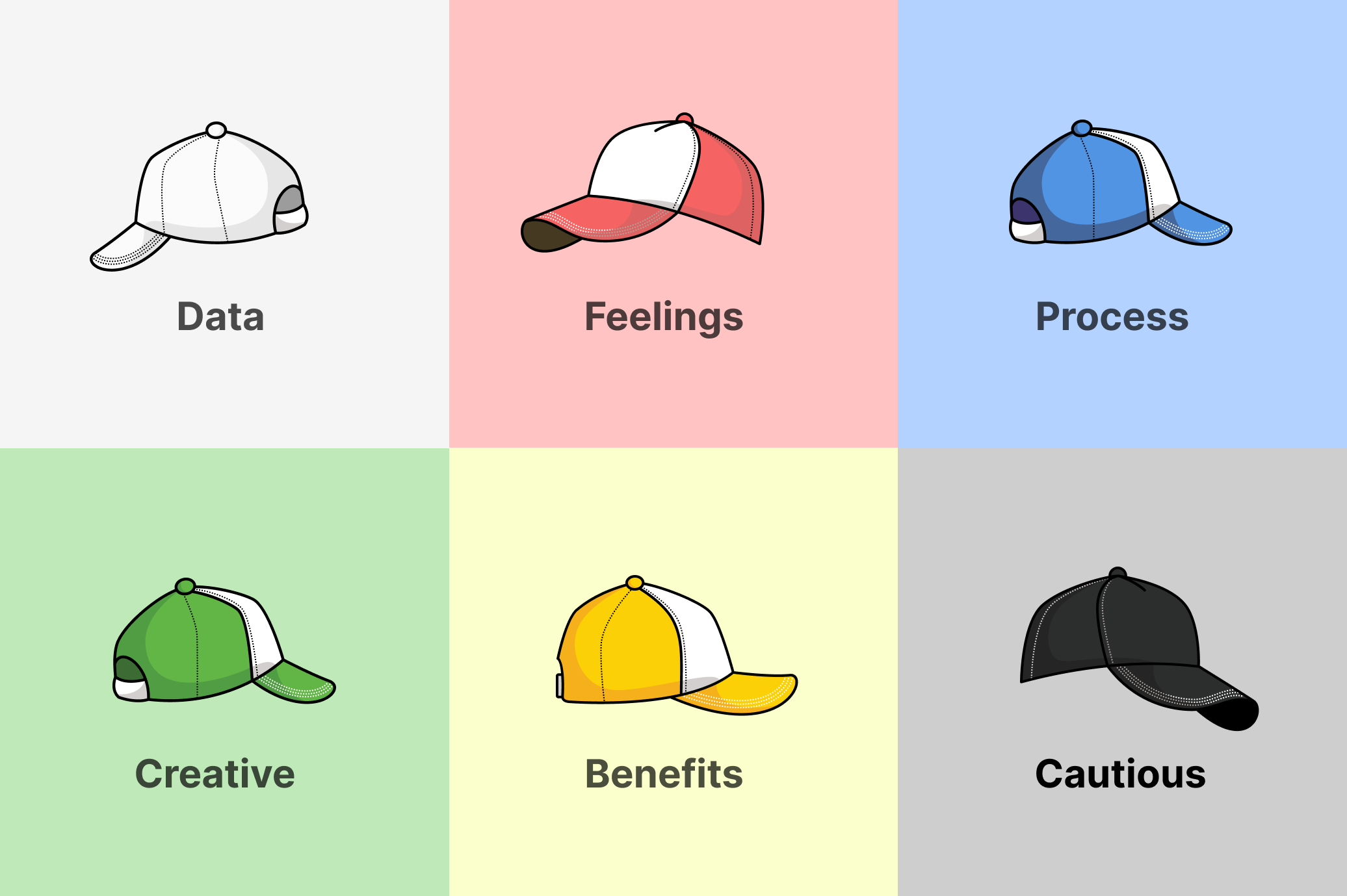The six thinking hats are a great tool for increasing the productivity of team meetings while also improving culture by better understanding others.
Each hat color represents a different role someone takes in a meeting.
Each hat color represents a different focus that a meeting participant can have. The colors mean:
White Hat: Focuses on data when making a decision.
Red Hat: Focuses on feelings, gut, and intuition when making a decision.
Blue Hat: Focuses on what processes need to happen, including facilitating the meeting itself.
Green Hat: Comes up with creative ideas to achieve the goal.
Yellow Hat: The optimist that focuses on the benefits of a given direction.
Black Hat: The pessimist that focuses on the cautions of a given direction.
We all have a couple of hats we most naturally wear.
Each person naturally gravitates toward specific hats and away from others.
I most easily wear the yellow hat (benefits) and green hat (creative). With this combination, I love to find unique ways of accomplishing goals and generally believe they will work.
The six thinking hats expose why we have conflicts with certain people.
I love the six thinking hats because they help me gain clarity on why at times I see a situation so differently from someone else.

Since I often wear the yellow hat (always seeing the benefits of something), I’m most prone to struggling with people who wear the black hat (always seeing the downsides or concerns). The reality of it is that we need both perspectives. If I didn’t have black hats around me, I’d charge after every idea I come across without cricially examining it.
Knowing who we might clash with and consciously recognizing the value they bring to the table is important in not just valuing every team member but ultimately leading your organization down the best possible path.
In my experience, here is where clashes most often occur. I’d encourage you to find where you fit in this and recognize the value your opposite brings.



Using the hats to structure meetings
While we all most naturally wear one or two of the hats, everyone is capable of putting on any of the hats. As a result, one of the most powerful ways to use these hats is to structure the flow of meetings by hat, asking everyone to put on the same hat at the same time. When your team understands what each hat means, the leader can easily say “I need everyone to put on your green hat to help dream right now” or “I need everyone to put on their black hat to be sure we’re aware of all the risks to this decision”.
Furthermore, based on the goal of the meeting, the leader can take the group through a sequence of hats to accomplish that goal. For example, a leader might structure a brainstorming meeting with blue, green, yellow, red, blue:

Using the hats individually to think through problems
While the six thinking hats really shine in a group context, they can also be used individually as you think through decisions. Intentionally thinking about a problem from the perspective of different hats allows individuals to look at a situation from more angles than they likely would without this guide.
Conclusion
Understanding the ‘six thinking hats’ and leveraging their benefits can significantly improve the efficacy and synergy in your team meetings. By recognizing the natural hat inclination of each team member, and by respecting the contrasting views, we can effectively reduce conflicts and enhance cooperation. The hats serve as a guide to navigating decision-making processes, striking a balance between different perspectives, and promoting the sharing of unique ideas. Incorporating this practice in your meetings, with each member consciously switching hats as per the situation or goal, will not only foster a healthier working environment but also drive your organization towards the most optimal outcomes.

